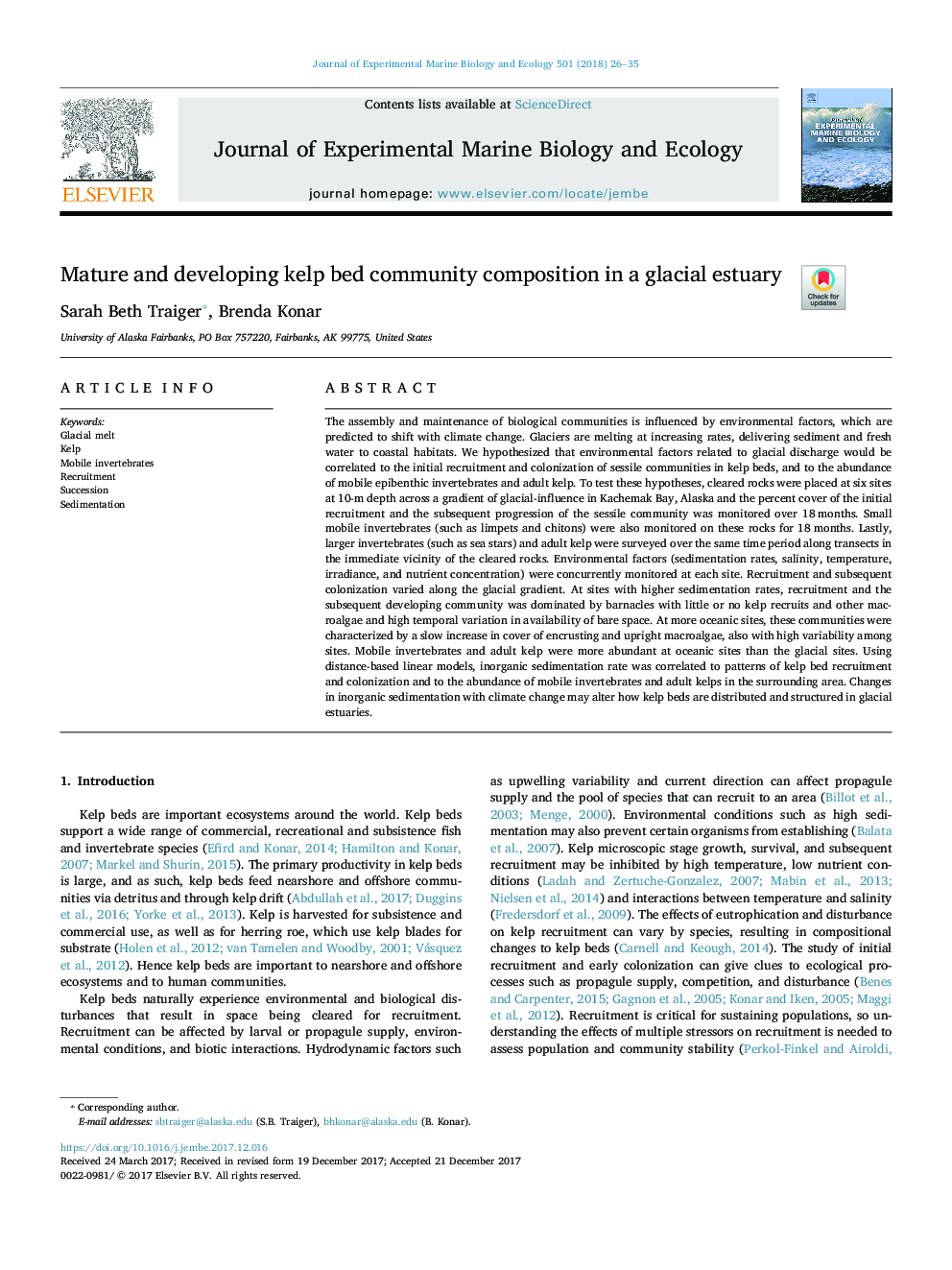| کد مقاله | کد نشریه | سال انتشار | مقاله انگلیسی | نسخه تمام متن |
|---|---|---|---|---|
| 8848976 | 1618374 | 2018 | 10 صفحه PDF | دانلود رایگان |
عنوان انگلیسی مقاله ISI
Mature and developing kelp bed community composition in a glacial estuary
ترجمه فارسی عنوان
ترکیب کامپوزیتی بالغ و در حال رشد در بستر یخبندان
دانلود مقاله + سفارش ترجمه
دانلود مقاله ISI انگلیسی
رایگان برای ایرانیان
کلمات کلیدی
موضوعات مرتبط
علوم زیستی و بیوفناوری
علوم کشاورزی و بیولوژیک
علوم آبزیان
چکیده انگلیسی
The assembly and maintenance of biological communities is influenced by environmental factors, which are predicted to shift with climate change. Glaciers are melting at increasing rates, delivering sediment and fresh water to coastal habitats. We hypothesized that environmental factors related to glacial discharge would be correlated to the initial recruitment and colonization of sessile communities in kelp beds, and to the abundance of mobile epibenthic invertebrates and adult kelp. To test these hypotheses, cleared rocks were placed at six sites at 10-m depth across a gradient of glacial-influence in Kachemak Bay, Alaska and the percent cover of the initial recruitment and the subsequent progression of the sessile community was monitored over 18Â months. Small mobile invertebrates (such as limpets and chitons) were also monitored on these rocks for 18Â months. Lastly, larger invertebrates (such as sea stars) and adult kelp were surveyed over the same time period along transects in the immediate vicinity of the cleared rocks. Environmental factors (sedimentation rates, salinity, temperature, irradiance, and nutrient concentration) were concurrently monitored at each site. Recruitment and subsequent colonization varied along the glacial gradient. At sites with higher sedimentation rates, recruitment and the subsequent developing community was dominated by barnacles with little or no kelp recruits and other macroalgae and high temporal variation in availability of bare space. At more oceanic sites, these communities were characterized by a slow increase in cover of encrusting and upright macroalgae, also with high variability among sites. Mobile invertebrates and adult kelp were more abundant at oceanic sites than the glacial sites. Using distance-based linear models, inorganic sedimentation rate was correlated to patterns of kelp bed recruitment and colonization and to the abundance of mobile invertebrates and adult kelps in the surrounding area. Changes in inorganic sedimentation with climate change may alter how kelp beds are distributed and structured in glacial estuaries.
ناشر
Database: Elsevier - ScienceDirect (ساینس دایرکت)
Journal: Journal of Experimental Marine Biology and Ecology - Volume 501, April 2018, Pages 26-35
Journal: Journal of Experimental Marine Biology and Ecology - Volume 501, April 2018, Pages 26-35
نویسندگان
Sarah Beth Traiger, Brenda Konar,
